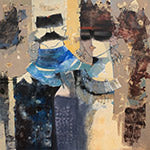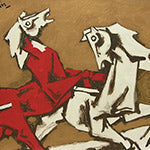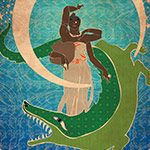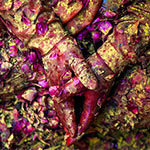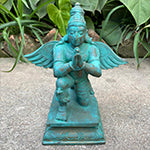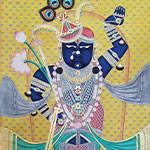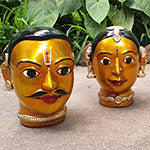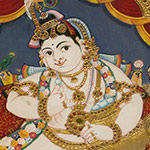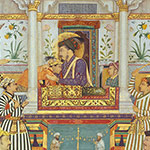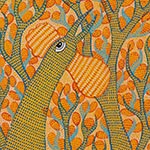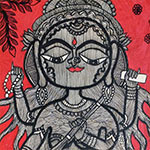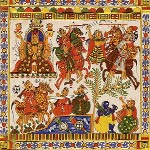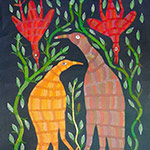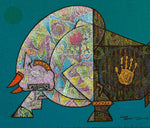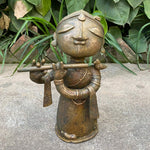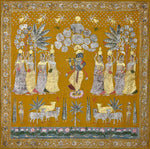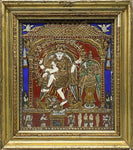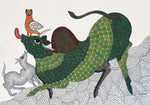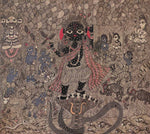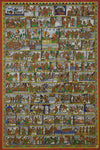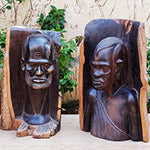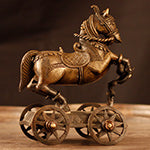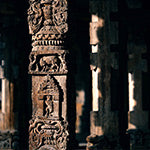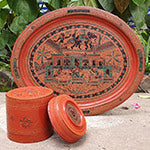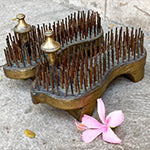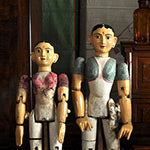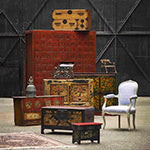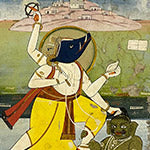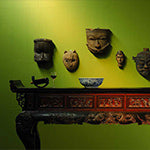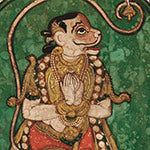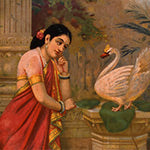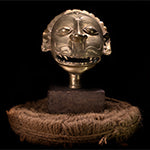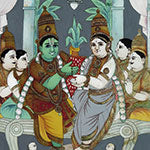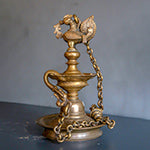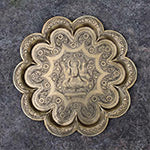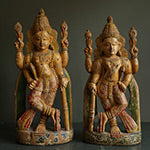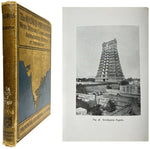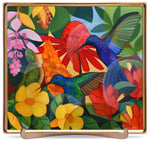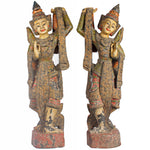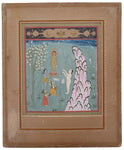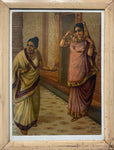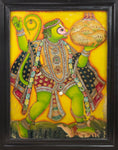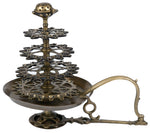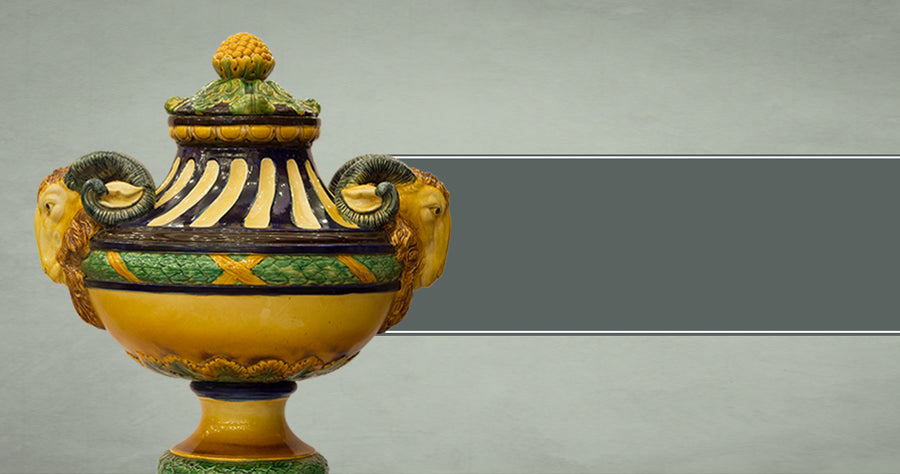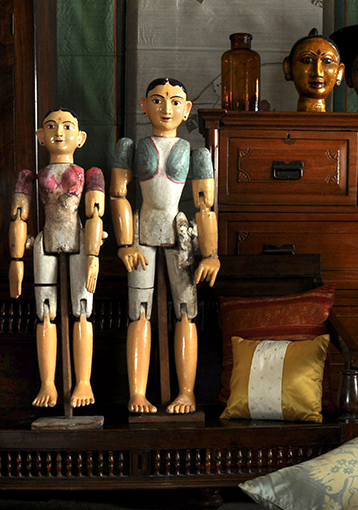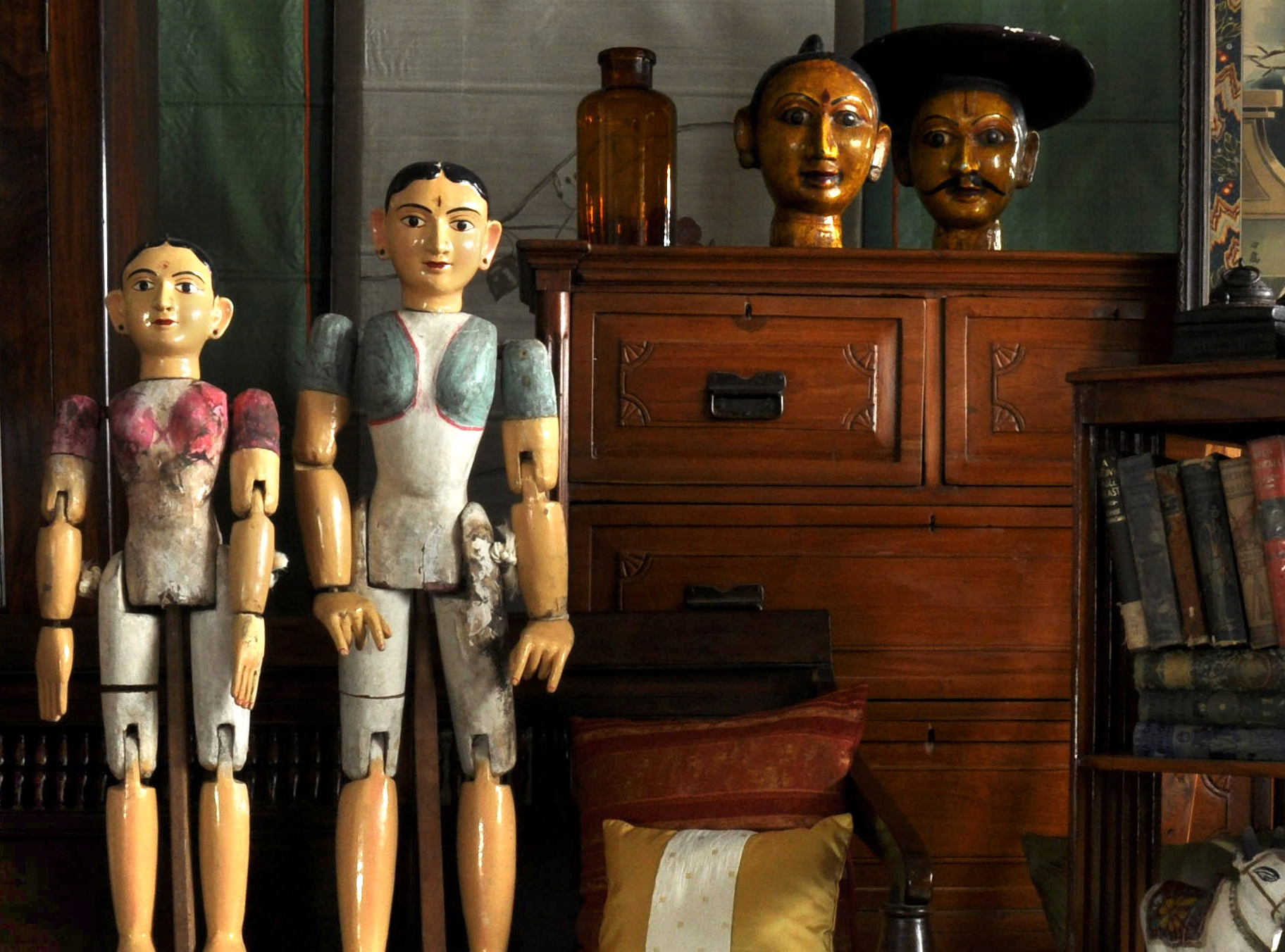50 Years and Counting - A Look at A. Ramachandran's Incredible Artistic Journey
Creators And CollectorsSkipping across paddy fields, finding his way to local temples and absorbing his surroundings amid nature’s lush abundance - all left a significant mark on the young, fertile mind of a boy growing up in the heart of Kerala. And it was this personal connection with nature throughout his childhood, that ultimately led Padma Bhushan awardee A Ramachandran, to become one of India’s most prolific and distinguished artists.

A Life of Inspirations
Born in 1935 in Attingal, Kerala, Achutan Ramachandran obtained his master's degree in Malayalam Literature, but eventually decided to indulge in his lifelong interest in art. He joined the Kala Bhavan in Santiniketan, West Bengal in 1958, where he studied under master artists like Ramkinkar Baij and Benode Behari Mukherjee, who hugely influenced his later works.
That his artistic inspiration lay in the years he spent growing up in Kerala, is clearly seen in Ramachandran’s Doctorate work, which was about the region’s famous mural paintings. In fact, most of his works throughout his career have been greatly influenced by the scale, forms and colours of murals found in the temples of Kerala, which remains a subject of continuing research for Ramachandran.
 (Summer Wedding, 2007; click to purchase as a Limited Edition Print on Artisera)
(Summer Wedding, 2007; click to purchase as a Limited Edition Print on Artisera)
Other influences, reflected in different phases of the exemplary artist’s work, have included the sensual figures from the Ajanta caves, gypsy women of the Bhil tribe, and bright hues of Rajput miniatures.
 (The Flight of Birds, 2014; image source: Vadehra Art Gallery)
(The Flight of Birds, 2014; image source: Vadehra Art Gallery)
The Political Phase
Ramachandran’s early works, dating back to the mid-1960’s, when he had just moved from Bengal to Delhi, and leading up to the early 1980’s, were done in an expressionist style, and reflected the angst of urban life. Political and social turmoil were a significant influence, with Ramachandran often painting tortured human beings, faceless people and violated bodies, in the belief that his art somehow needed to depict the world’s dark realities.
 (Homage, 1964; image source: Vadehra Art Gallery)
(Homage, 1964; image source: Vadehra Art Gallery)
A Marked Shift
A defining moment in 1984, however, completely changed the way Ramachandran viewed the role of his art in the world. During the communal riots, he saw a gang of 12 men mercilessly kill a person 'like a dog', from his terrace. He was helpless, and could do nothing to save the dying soul. It dawned upon him that day, that art cannot change political violence; at the very most, art can capture it.
 (Audience, by A Ramachandran; image source: Vadehra Art Gallery)
(Audience, by A Ramachandran; image source: Vadehra Art Gallery)
And so, he ceased to be political in his art, and instead, decided to make works that were pleasant, and had the ability to heal.
 (Eklinji Fantasy, 2014; image source: Vadehra Art Gallery)
(Eklinji Fantasy, 2014; image source: Vadehra Art Gallery)
Yayati
One of Ramachandran’s most lauded works, ‘Yayati’ was created at the beginning of this transitionary period. A monumental installation of painting and sculpture, it consists of 12 panels, 60 feet long and 8 feet wide, with a group of 13 bronze figures in the centre. Derived from the story of Yayati from the Mahabharata, this magnificent artwork took 4 years to complete, and is characterised by the use of rich mythological imagery, laced with a contemporary touch, and influenced heavily in form and colour by the murals of Kerala.
 (Panel from Ramachandran's masterpiece Yayati; image source: artoframachandran.com)
(Panel from Ramachandran's masterpiece Yayati; image source: artoframachandran.com)
Influences from Rajasthan and Connect to Nature
In the mid 1980’s, a tribal community of Bhils in Rajasthan situated close to Udaipur, became a major muse for the artist. Their vibrant lifestyle and rich ethos caught his imagination. Spending days at a stretch with the community, and putting all his creative energy into understanding their life and culture, Ramachandran found, in the process, an undisturbed island away from the turmoil of urban life. The experience of going back to nature, sitting by lotus ponds, and exploring the simple lifestyle of the tribespeople in the desert, became a life-long obsession for the artist.
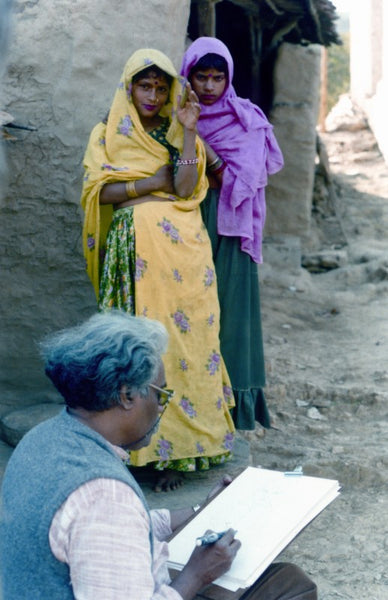
 (Image source: artoframachandran.com)
(Image source: artoframachandran.com)
Different elements of Indian classical art, such as dazzling motifs, decorative imagery and a melange of colours that astound the senses, have appeared consistently in the sylvan rural landscapes that Ramachandran has painted since. The presentation of nature is aesthetic and striking, with trees, flowers, leaves, birds and fireflies painted in a definitive, realistic style.
 (Dancing on Full Moon Night, 2013; image source: Vadehra Art Gallery)
(Dancing on Full Moon Night, 2013; image source: Vadehra Art Gallery)
The Depiction of Self
Ramachandran’s paintings are a feast not just for the eyes but also for the mind. In a radical departure from modern practices, he includes himself in his canvases, not by means of an artist’s signature, but by painting himself in different forms. Sometimes he is metamorphosed as Vishnu, sometimes as the rain god painting the droplets that add up to a shower; at other times as a fish or a bird sitting quietly in one corner, or perhaps as a baby in the foetal position. Including himself in paintings in this inconspicuous manner, discernible only to trained eyes, has become a hallmark feature of Ramachandran’s art.
 (The Rainmaker and the Plastic Cover; click to purchase as a Limited Edition Print on Artisera)
(The Rainmaker and the Plastic Cover; click to purchase as a Limited Edition Print on Artisera)
The Artist Beyond Painting
Spanning five decades, Ramachandran’s creative works have included not only the large mural-like oil paintings that he is renowned for, but also sculptures, ceramics, writings, illustrations and stamps. The artist has an extensive personal collection of miniature paintings from across India, as well as old Christian wooden sculptures from Kerala.
 (Stamps designed by A Ramachandran; source: artoframachandran.com)
(Stamps designed by A Ramachandran; source: artoframachandran.com)

(Ceramic work by Ramachandran; source: artoframachandran.com)
Apart from indulging in his creative pursuits, Ramachandran was also a Lecturer in Art Education at the Jamia Millia University in New Delhi since the 1960’s, eventually becoming Professor Emeritus in 2005. In 1991, he was appointed Honorary Chairman of the Kerala Lalithakala Akademi, and was also appointed a Lalit Kala Akademi Fellow in 2002, the highest honour in the Fine Arts conferred by the Government of India.
 (Ramachandran with students at Jamia Millia University; image source: artoframachandran.com)
(Ramachandran with students at Jamia Millia University; image source: artoframachandran.com)
For A Ramachandran, his best critic is his wife Chameli, a renowned Indian artist of Chinese origin. The couple met in Santiniketan, and were married after a decade of courtship. Together for more than 50 years, today they are each other’s toughest critics, yet biggest supporters.
 (Ramachandran and his wife Chameli; image source: shevlinsebastian.blogspot.in)
(Ramachandran and his wife Chameli; image source: shevlinsebastian.blogspot.in)
With rich aesthetics and abundant use of classical Indian imagery, Achutan Ramachandran’s work draws from traditions that have been an innate part of Indian culture. His intricate and detailed portrayals highlight his ability to reflect a completeness and intimacy of human life and nature, that truly surpasses the ordinary.


